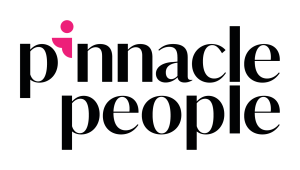Earlier this month we celebrated International Women’s day, an annual event which seems to receive equally large amounts of coverage, praise, and criticism. Although the day is focused on gender parity and the prevention of violence against women (in sombre contrast to International Men’s Day, which is on November 19th and focuses on ‘improved health, improved gender relations, gender equality and positive male role models’), it serves to remind us of ongoing equality and diversity issues, including those in the workplace.
All industries face challenges, with the Workplace Gender Eqality Agency (WGEA) announcing in its updated February 2016 statistics that the Australian full-time average hourly earnings for women were still 13.9% less than for men. For the hospitality industry (classified as “Accommodation & Food Services” by WGEA) the pay gap picture was a little more positive at 10.9% according to the 2014-15 Gender Equality Scorecard.
However, long term statistics show a management proportion that, though improved, still has a long way to go. Although women represented 51.3% of hospitality workers in 2012-13 (up to 55% in 2014-15), only 9.8% of CEOs in the industry were women (see Table 1), compared to an Australian average of 15.4% in 2015 (hospitality management breakdown not yet available for latest year).
Table 1: Proportion of Female Staff & Managers by Year, Accommodation & Food Services Source: WGEA Gender Diversity by Industry Spreadsheet
Of this, New South Wales had the least gender diversity in CEOs at 8.3%, while South Australia and Tasmania led with 16.7% women in the top job. International studies1 have revealed that organisations suffer negative productivity and performance when top management includes less than 10% women (with those few being viewed as ‘token’ managers rather than being in the position on merit) with a “sweet spot” of peak performance at somewhere between 20-30% female top managers. Beyond that, performance could drop off again if organisational culture was negative (with an unverified proposal that male counterparts may feel threatened when the proportion of female managers is too high, and that not enough emphasis is placed on top managers interpersonal communication skills rather than technical attributes).
Closer to home, InterContinental Hotel Group’s (IHG) COO Karin Sheppard was recently featured by Hotel Management states that underlying changes in workplace environment and culture are necessary to drive improved gender diversity at upper management levels. Following the implementation of a generous paid parental leave program (for both men and women) IGH has achieved a 95% return to work after parental leave from its female talent. It’s an impressive figure by any account, particularly in these days of steadily decreasing employee loyalty and retention rates. And a sense of loyalty, in turn, has an impact on engagement, motivation and productivity (one American study from 2000 found that a whopping 56% of their employees reported as ‘not engaged’ with their workplace).
Table 2: Proportion of Female Staff & Managers by State, Accommodation & Food Services Source: WGEA Gender Diversity by Industry Spreadsheet
Overall, it seems like gender gaps in the hospitality industry are improving, however there is still a long way to go.
How is the gender parity health of your organisation? We’d love to know about your gender distribution at worker and management levels, or if you’ve implemented any positive gender equality programs, and what the result has been.
If you’re an HR or Culture manager who has seen some great results from your organisational programs, please email communications@pinnaclepeople.com.au . We can also provide industry salary benchmarking on request.



